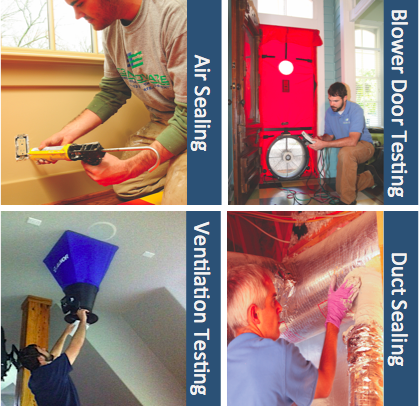Feeling Sticky...?
The heat is on in Middle Tennessee. We've enjoyed a beautiful spring, but the heat and the humidity are back! When high temperatures mix with high humidity, it feels hotter than it actually is. When indoor humidity levels are high, not only do we feel sticky and uncomfortable, we also increase the risk for mold, mildew, and allergy and asthma triggers.
Here are some tips for reducing indoor humidity levels.
1. Seal up the air leaks in your home.
A leaky home is like driving around with the windows down while the AC runs full blast! If your home is leaky, your HVAC system is working overtime to keep up with the extra load and you are spending more than you have to on your cooling (and heating) bills. You can significantly improve your comfort, increase the life of your HVAC unit, and reduce cooling costs by simply sealing the air gaps in your home.
2. Seal your ducts and the register boots.
You won't settle for leaky pipes, why settle for leak ducts? Whether your ducts are located in your attic or your crawlspace, you could be loosing a lot of cold air to unconditioned areas of your home, wasting energy and money. Leaks are common in most homes around the duct joints and where the return and supply duct connect to the HVAC system. This happens frequently when duct tape is used and as systems age. Air leakage is also common around the register boots (where the supply duct attaches to the register). These leaks not only prevent conditioned air from entering your home, they also allow unconditioned, unfiltered air to seep in from the crawlspace or the attic. This is a major source of humidity, odors, dust, mold, and other unwanted air contaminants. Sealing duct work and register boots can reduce indoor humidity levels and air contaminants.
3. Seal your crawlspace.
Vented crawlspace are typically a significant source of humidity. Add air leaks, leaky ducts, and leaky register boots to the equation and you create the perfect recipe for indoor humidity issues and poor indoor air quality. In addition to feeling uncomfortable and breathing stuffy air, humidity in the crawlspace can lead to deterioration of the subfloor over time and cause hardwood floors to buckle and crack (check out last month's blog for more on this topic) Sealing your crawlspace has benefits far beyond indoor comfort levels; protect your home, your health, and your foundation from all the wild cards that Mother Nature can deal.
4. Make sure your dryer vent is attached properly.
During a normal dry cycle, your dryer draws out a gallon or more of water from you clothes in the form of water vapor. If your dryer vent is leaky, this water (and lint) ends up in your house. Not only does this overwork the HVAC system, it sets up the perfect environment for mold. Dryers should be exhausted with ridged metal ducting rather than the flexible type, which collect more lint, can overheat and cause lint fires, and can be easily crushed or crimped and bloc the exhaust flow.
5. Double check the functionality of your exhaust fans.
Do your exhaust fans suck (i.e. are they pulling sufficient amounts of humid air our of your home to keep it dry and comfortable)? We often see flow rates that are too low and don't do a sufficient job of exhausting moisture. It is also important to check that exhaust ducts don't terminate in the attic! You gotta get that humid air outside with a hard pipe. E3 installs fully automated smart bathroom fans with motion and condensate sensors that effectively exhaust humidity and improve ventilation within your home.
Don't let the sweat dampen your summer! Call E3 today to schedule your Whole Home Diagnostic Test. We'll identify the sources of humidity in your home and help you create a comfortable, healthy indoor environment for you and your family. Learn more about our Diagnostic Testing services here.

